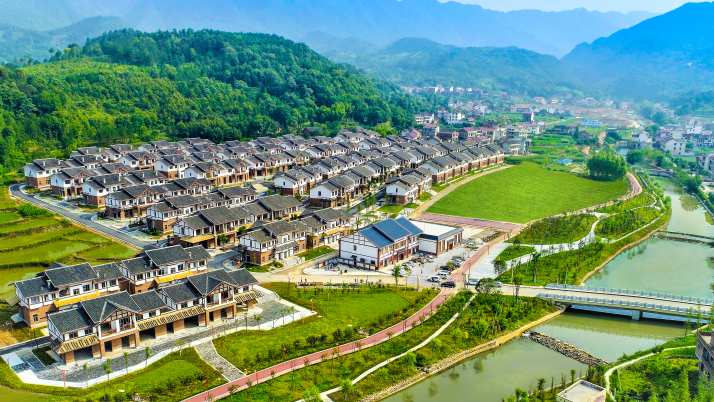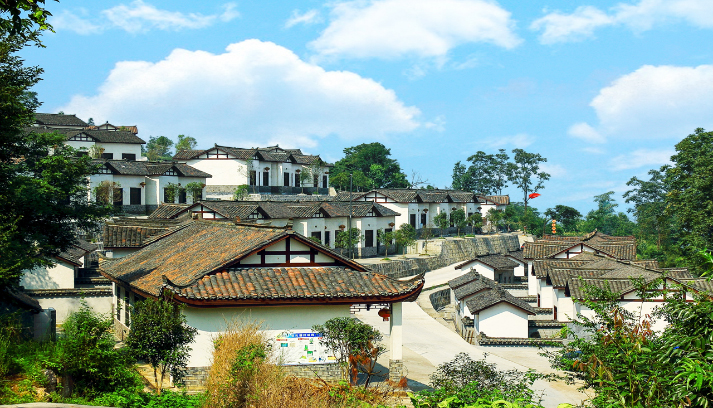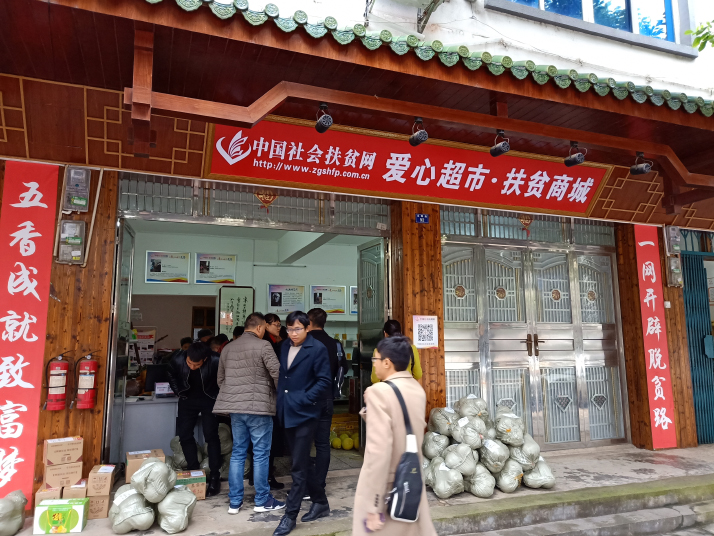|
||||||
|
||||||
| Home Nation World Business Opinion Lifestyle China Focus ChinAfrica Multimedia Columnists Documents Special Reports |
|
||||||
|
||||||
| Home Nation World Business Opinion Lifestyle China Focus ChinAfrica Multimedia Columnists Documents Special Reports |
| Nation |
| On the Road to Prosperity |
| Hunan will take further steps to boost poverty alleviation |
| · 2019-03-04 · Source: NO. 10 MARCH 7, 2019 |
 A residential community for relocated poor villagers in Tanfu Township, Xinshao County (COURTESY PHOTO)
September 24, 2018 was a special day for Shi Liujin, a farmer living in Shibadong Village, Huayuan County in central China's Hunan Province. On that day, the 44-year-old got married, something that had eluded him because of his financial situation. But his life is much better now as a result of the country's targeted poverty alleviation policy, which was first put forward by President Xi Jinping, also General Secretary of the Communist Party of China (CPC) Central Committee, in 2013. The ambitious drive aims to eliminate rural poverty by 2020. "I should really thank General Secretary Xi and the policy adopted by the CPC," Shi said at his wedding reception. Shi Liujin, a farmer living in Shibadong Village, Huayuan County, at his wedding on September 24, 2018 (COURTESY PHOTO)
Targeted methods Shi is not the only one who has benefited from the policy in Hunan. In 2018, over 700,000 poor people in Tanfu Township, Xinshao County, moved out of their old dilapidated houses into new and ample apartments under an anti-poverty relocation program. Moreover, for the first time, farmers in Jiangyong County sold their produce through an online store dedicated to poverty relief. Hunan, where Xi initiated targeted poverty alleviation, faces an arduous task, since it has a large impoverished population. But according to statistics from Hunan's poverty relief office, 1.309 million rural people worked their way out of poverty in 2018. How did the local government accomplish this? The province has made poverty alleviation a political task. Following Xi Jinping Thought on Socialism with Chinese Characteristics for a New Era, it has implemented the central authorities' decisions and arrangements in a thorough manner, and prioritized substantial results. The province also initiated efforts based on its own conditions. In addition to effective policies and substantial funds, it supported industrial development, created employment, relocated people to more habitable areas, renovated decaying housing and strengthened social security. A responsibility system was set up. The provincial governor and the officials in charge of poverty reduction led the work in order to ensure that policies were implemented throughout each administrative division. Officials at all levels paid visits to poor households to check on the results of the implementation of targeted measures. The government introduced a policy that further refined each step of the work with a clear division of responsibility. Poverty alleviation was also connected to rural revitalization, a major strategy which prioritizes issues related to agriculture, rural areas and farmers. In 2018, 16.8 billion yuan ($2.5 billion) went to poverty alleviation work in 51 poor counties, including a special fund of about 4.7 billion yuan ($699 million) from the Central Government and 3.8 billion yuan ($565 million) from the local governments. In the 11 extreme poverty-stricken counties, the government encouraged the development of industries including citrus, waxberry, tea, medicinal herbs and animal husbandry, with eight industrial bases set up accordingly. Nearly 600 technical personnel were dispatched to help local farmers. The government also boosted employment by providing training and public service jobs to villagers. A total of 537 employment bases were set up and 105,000 people received vocational training. The number of newly-added transferred impoverished labor to urban areas reached 95,000. In addition, the government made it easier for more than 300,000 villagers to find jobs in their hometown by supporting the building of over 4,000 workshops and establishing 138,000 public service jobs.  New houses in Jile Village, Fenghuang County, which are funded by government poverty relief funds (COURTESY PHOTO)
Since most poor areas lacked access to transportation, Hunan built more airports, highways and roads to solve the problem. Other infrastructure, including electrical grids, broadband Internet access and water supply systems, were also improved to make residents' lives better. Hunan also worked on ensuring housing safety for the poor by relocating people to more livable areas and renovating old houses. It helped 168,000 people solve their housing problems in 2018. For those who are not able to work, such as seniors and people with disabilities or serious illnesses, social security plays a crucial role. In total, 903,000 people received a basic living allowance, and nearly 20,000 people with disabilities were offered care services, while 11,655 villagers with disabilities received vocational training that proved helpful for increasing their income. The government also helped 2,300 people with disabilities start their own businesses, and 16,500 people saw their income increase.  An online-to-offline store that sells goods produced by poverty-stricken villagers in Jiangyong County (COURTESY PHOTO)
Supervision and innovation The Hunan Provincial Government has also adopted a strict appraisal system to ensure the effective implementation of poverty relief policies and avoid dereliction of duty by officials. The fostering of a strong sense of duty is crucial for officials who hold poverty reduction positions. Supervision and inspection were conducted to make sure that corrupt or incompetent officials were punished. In 2018, more than 2,800 officials were held accountable for poor performance. On the other hand, those who made contributions to the fight against poverty were rewarded. The province also explored new mechanisms for poverty alleviation. It set up a big data base for intelligent analysis and dynamic monitoring of policy implementation. A platform was set up to simplify the hospitalization and reimbursement processes. An information management system was available to guarantee financial support for education and reduce the number of dropouts. It also worked on ensuring that the quality of the poverty reduction work would lead to long-term results. The government made clear preferential policies for those who worked their way out of poverty and set up an evaluation mechanism to check the follow-up performance of counties that shook off poverty.  A big data monitoring platform checks the implementation of Hunan’s poverty reduction efforts (COURTESY PHOTO)
Based on the employment environment and features of poverty-stricken labor, the province improved its services and established partnerships with other provinces so that people could have more employment opportunities outside of Hunan. Public participation also contributed to Hunan's poverty alleviation efforts. In 2018, over 4,500 companies participated in 8,800 programs established to help more than 5,000 poverty-stricken villages. Donations from all parts of society amounted to nearly 2.2 billion yuan ($330 million). The year 2019 is crucial for the country toward its goal of building a moderately prosperous society in all respects and consolidating its poverty alleviation achievements. Hunan will take further steps by lifting 600,000 people, 718 villages and 19 counties out of poverty, while at the same time, it will continue to work to meet people's needs for food, clothing, compulsory education, basic medical care and housing. |
About Us | Contact Us | Advertise with Us | Subscribe
|
||
| Copyright Beijing Review All rights reserved 京ICP备08005356号 京公网安备110102005860号 |